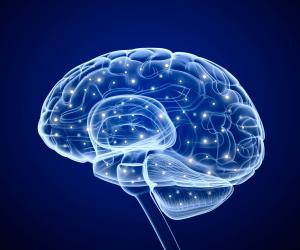Brain maps of people with autism spectrum disorders (ASD) show different levels of connectivity between parts of the brain compared with typical individuals.

Copyright : sxwx* (maze), alexmit* (brain), G.Doucette (composite re-imaging).
Autism spectrum disorder is a group of neurological dysfunctions ranging from hyperactivity to Asperger’s syndrome, resulting in challenges in thinking, talking, recognizing and expressing emotion, and social interactions. Researchers at University of Malaysia Sarawak compared the brainwave patterns of ten individuals with ASD to those of ten typical individuals to try to pinpoint what anomalies might be associated with particular disorders.
The team used a quantitative electroencephalogram (QEEG), which measures electrical activity through 19 electrodes resting on the head during specific tasks. It allows them to see brainwaves that move at different frequencies, creating a brain map showing more or less activity in different regions of the brain.
Overall, individuals with ASD have fewer beta waves throughout the brain than normal, indicating under-connectivity throughout the brain. Decreased beta waves are usually associated with attention problems, learning disabilities and brain injuries.
The brain maps further revealed ASD individuals had both excessive slow and fast waves in the frontal lobe. This might suggest faulty connections between the front and back regions of the brain.
[pullquote]The researchers found that neurofeedback training based on a QEEG-guided protocol was more effective than neurofeedback based on symptoms.[/pullquote]
ASD individuals also had reduced alpha waves in brain regions associated with senses and gross motor movement, which might explain why they could not mimic instructed tasks.
The observations are consistent with other studies using different brain imaging tools, like functional magnetic resonance imaging. The researchers note that by observing specific anomalies with QEEG, clinicians can develop individualized neurofeedback training plans for ASD patients. Neurofeedback training involves measuring an individual’s brainwaves and producing auditory and/or visual signals as feedback to the brain to teach it to regulate its own functions. The researchers found that neurofeedback training based on a QEEG-guided protocol was more effective than neurofeedback based on symptoms.







